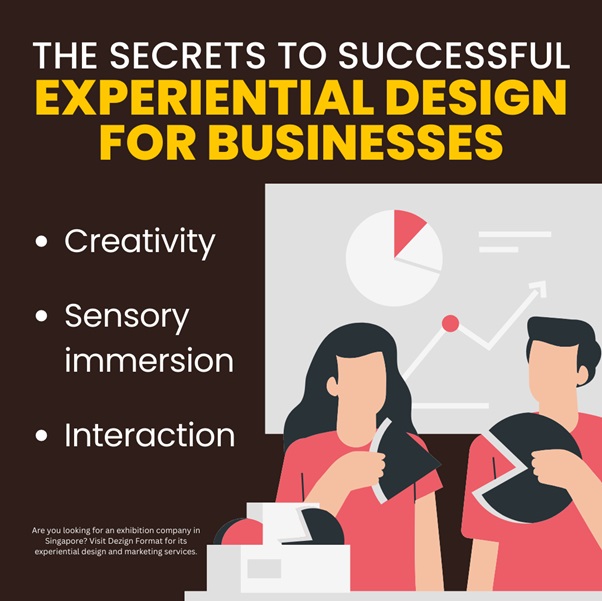Traditional marketing strategies, such as magazine ads and TV commercials, may be pleasing to the eyes and ears of many but not to younger generations anymore. The trend among marketers today is experiential marketing through experiential design.
But what is experiential design? Experiential design is a marketing strategy that focuses on human interaction within a built environment. It immerses the five senses: sight, hearing, smell, taste, and touch. You can typically see it at exhibition booths in brand activation events.
Here are the secrets to successful experiential marketing services:

1. CREATIVITY
As mentioned, commercials and print ads are not enough anymore. More people want all of their senses stimulated in order to convince them to buy a product or service.
But before sensory immersion, a marketing strategy must be interesting enough to pique curiosity and get the attention of the audience. Therefore, it is a must for the exhibition company in Singapore to be creative and think outside of the box when coming up with experiential marketing strategies.
2. SENSORY IMMERSION
The experiential design capitalises on the five human senses: sight, hearing, smelling, tasting and touching.
- Sight – Visual impact of exhibition booths attracts the attention of the audience. Popping colours, videos, animations, and lights can catch the interest of people.
- Hearing – Banger music, jingles, narrations and monologue can also help set the mood and persuade the audience to buy your product or service.
- Smell – Smell can evoke memories and forgotten experiences; it is a great tool to sell your products and services. Many exhibition booths spray fragrances. Bakeshops make sure the strong aroma of bread is wafting around.
- Taste – Free taste in shops is a way to stimulate the sense of taste. Giving your consumers free taste is an opportunity for them to determine which food product they like.
- Touch – Did you know why smartphone shops have sample phones where consumers can try their cameras, apps, and other features? It stimulates the sense of touch. The audience can feel their build and weight.
3. INTERACTION
The consumer must be able to interact with the product and service. Among the examples is product demonstration. You can see these activities in brand activation events. People can also try the products themselves!
These are the secret ingredients for successful experiential marketing services.
Are you looking for an exhibition company in Singapore? Visit Dezign Format for its experiential design and marketing services.




